African elephant and rhino are being butchered at record rates for their tusks and horns. We revisit Melissa Twigg's haunting writing on the practice as the piece received Honourable Mention for Lifestyle Coverage at the Society of Publishers in Asia (SOPA) Awards last week
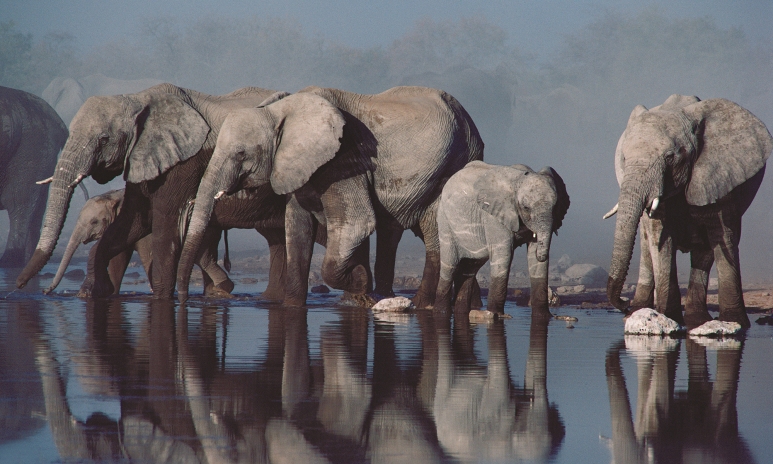
An estimated 35,000 elephant are being killed annually in Africa
Asante, a two-month-old elephant, was found in Kenya’s Masai Mara attempting to suckle from her dead mother while a pack of hyena circled them both. Her mother had been brutally brought down by poachers and her tusks cut out before she was dead. However, a young elephant’s need for love and affection is so great that despite her memories of human cruelty, she gently entwines her trunk around my waist as I open the gate to her pen. Pato, a four-month-old rhino found severely dehydrated in the northern Serengeti, had spent two days standing under the sun by the body of his mother, one of thousands of rhino killed by poachers last year for their horn. In his mother’s dying moments, Pato was also shot—blinded in an eye and wounded in a leg.
Both young animals are recuperating at the David Sheldrick Wildlife Trust in Nairobi, a haven for orphaned elephant and rhino set up in 1977 by Daphne Sheldrick in honour of her late naturalist husband. However, the much-loved institution risks being overwhelmed by the tidal wave of poaching sweeping across Africa’s wildlife. “I’m terrified by what’s happening out there,” says Sheldrick. “I’ve been doing this for over 35 years, but the number of orphaned animals coming to us has grown exponentially in the last five years and we’re finding it difficult to cope.”
A little more than a decade ago it appeared the ivory trade had been brought under control. The trade, which has existed for centuries, had grown to such an extent by the 1970s that elephant faced the risk of extinction. However, concerted crackdowns on poaching and smuggling, and education of consumers about the terrible cost of ivory, eventually significantly reduced demand in the West to. By the year 2000, many conservationists declared elephant poaching no longer at a critical stage.
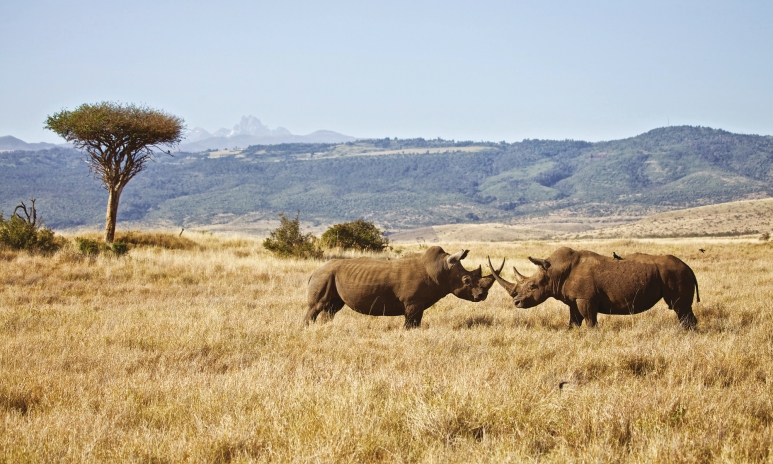
The Asian rhino has been hunted to virtual extinction for its horn, which is made of keratin, the same substance as hair, feathers and fingernails. It has been used in traditional Asian medicine for centuries to treat fever and other ills, despite having no medicinal value. However, the black and white rhino of Africa were abundant through most of the 20th century, and the main threat they faced was habitat loss. In 2001, only one rhino was killed in South Africa; in 2006 this had increased to just 10.
But poaching has exploded since then. The situation has become so desperate that many conservationists believe there isn’t enough time left to save these magnificent beasts anywhere other than in zoos and breeding centres. Some 35,000 elephants are estimated to have been killed in each of the past five years, with about 500,000 remaining today. Devastating as that sounds, a recent United Nations-backed analysis of ivory seizures around the world suggests the death toll may have been far higher. There is no single continent-wide figure for rhino, but South Africa, which has the majority of the remaining population of 25,000, reported 1,215 rhino were killed last year. If poaching continues at this pace, rhino could be extinct by 2020 and elephant by 2026.
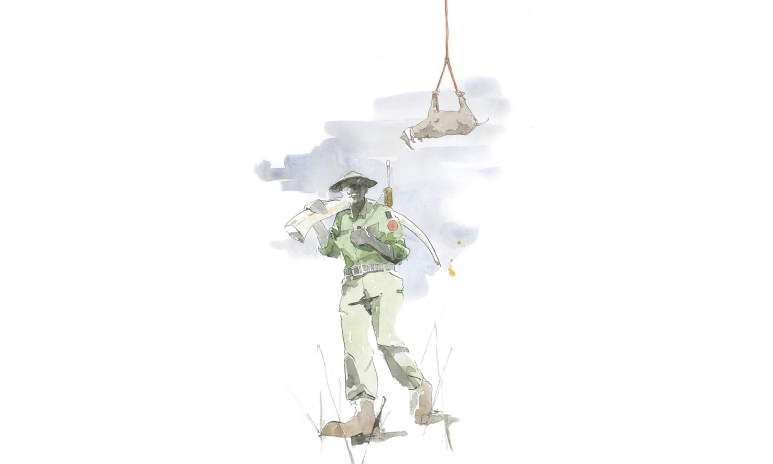
Game rangers across Africa have adopted a shoot-to-kill policy with poachers; Illustrated by George Butler
Poaching on this scale is a new phenomenon, funded by modern technology, transport and ammunition—and ancient beliefs held far from African shores. In the past five years, practitioners in China and Vietnam have endowed rhino horn with even more fantastic properties than previously claimed, such as the ability to cure cancer, hangovers and impotence, and the value of a kilo of horn has hit US$60,000 as a result. Elephants, highly emotional animals with powerful family bonds, are also grieving their dead across Africa daily because the value of their tusks has been driven to US$2,100 a kilo by demand from China’s burgeoning middle class, which prizes ivory carvings, jewellery and chopsticks.
Demographic changes in Africa are helping to drive the trade. The number of Chinese residents on the continent has grown from 70,000 to more than a million in the past decade, and China’s investment in Africa reached more than US$100 billion last year. This has brought many benefits but wildlife conservation isn’t one of them. Ninety per cent of passengers arrested for possession of ivory at Jomo Kenyatta International Airport in Nairobi last year were Chinese nationals, and the foremost ivory consumers in the world are middle-aged Chinese men eager to flaunt their newfound wealth.
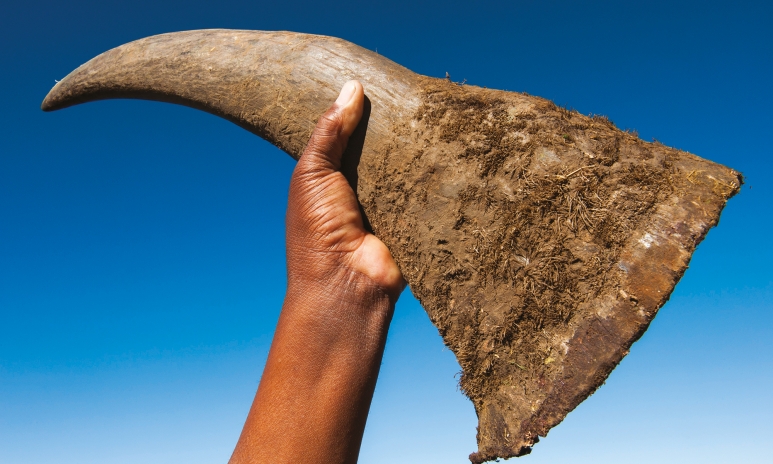
The highly covetable rhino horn
With such vast sums of money up for grabs, stopping poaching on the ground has become virtually impossible. Poachers were once impoverished locals armed with little more than a spear and unable to resist the relatively paltry sums—about US$1,000 for an entire rhino horn, which averages about 3kg—offered by traffickers. Today, terrorist rings such as Somalia-based Al-Shabaab fill their coffers via the wildlife trade, which means poachers are armed with military-grade weapons. “They have helicopters, night-vision goggles, thermal imaging and sniper rifles,” says Michael Dyer, who owns Borana, a rhino conservation farm in Kenya’s Laikipia district. “They fly in at night from the Somalian border and are so well equipped that any park with rhino seriously struggles to defend itself. Soon the cost of keeping the rhino alive will be too great for anyone to handle.”
If poaching continues at this pace, rhino could be extinct by 2020 and elephant by 2026.
A few days later, I meet Musoma, a reformed subsistence poacher and a member of the Kamba tribe, who lives in the northern Serengeti in Tanzania, a country where nearly 30 elephant are poached every day. For his own safety, he has asked that only his first name be used in this article. Through a translator, he explains that although men from his tribe traditionally killed wild animals for food, dedicated elephant and rhino poachers are usually foreigners, typically from Somalia and the Democratic Republic of Congo. “We make money from tourism and we don’t want our elephant to be killed on this scale,” he says. “But last year a man from my village reported the poachers to Tanapa [the Tanzanian National Parks Authority] and a week later he and his entire family were shot by the poachers. Their two young children died and their hut was burned to the ground. Now we’re too afraid to report anyone, so the poachers do their business as they please.”
 Illustrated by George Butler
Illustrated by George Butler
Musoma leads me to the corpse of an elephant killed a month earlier. The poachers covered the carcass with branches so it wouldn’t attract vultures, which act as an alert for rangers, and although scavengers have cleaned most of it bare, I can still see that half the elephant’s face has been hacked off by a machete, and its gaping mouth appals me. “You can see this animal has not died naturally in the wild. Someone must stop this,” says Musoma quietly.
Sadly, this is a well-worn scene across Africa, and in South Africa game rangers in the Kruger Park have to live through the trauma of finding slaughtered animals on a daily basis. Poaching has reached such a critical stage that the government has declared the famous conservation park a war zone, allowing rangers to shoot to kill offenders without fear of prosecution. The US has donated drones and artillery to help monitor Kruger’s borders, where 60 per cent of the world’s rhino poaching occurs. “President Obama made it clear that combating the illegal wildlife trade would be a priority of his administration,” says Patrick Bergin, CEO of the African Wildlife Foundation (AWF) and a special adviser to the White House. “The illegal trade in ivory and rhino horn threatens not only wildlife but also regional and international peace and security.”
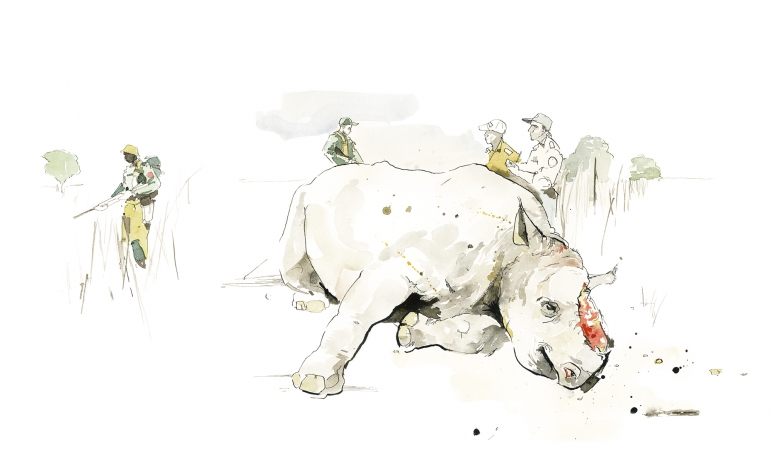
One rhino is killed every eight hours in South Africa alone due to an explosion in demand for rhino horn in China and Vietnam;
Illustrated by George Butler
They may be getting help in high places but Kruger Park is still losing rhino at a terrifying rate and relocation is starting to seem like the only solution. “We’ve got to the point where we need to accept that Kruger is too dangerous for rhino,” says Map Ives, a Botswanan conservationist overseeing a project to relocate rhino from Kruger to the Moremi Game Reserve in Botswana’s Okavango Delta. Small, prosperous and difficult to reach, Botswana has an excellent conservation record and a president committed to protecting wildlife. “The animals will have a much better chance of survival here, but the mission is expensive,” says Ives. “The rhino have to be captured, drugged and carried under a helicopter across the border. They are then observed for months to ensure they are adapting to the new habitat, and finally released into the wild. It’s risky but it may be our only way of keeping them alive.”
Says the AWF’s Bergin, “I think it’s tragic that governments feel compelled to go to such lengths in order to protect their wildlife. But I understand South Africa’s decision. We are all in crisis-management mode, and desperate times and situations call for desperate measures. We are racing against the clock and we don’t have the luxury of taking the long and winding conservation road. It’s a state of emergency.”
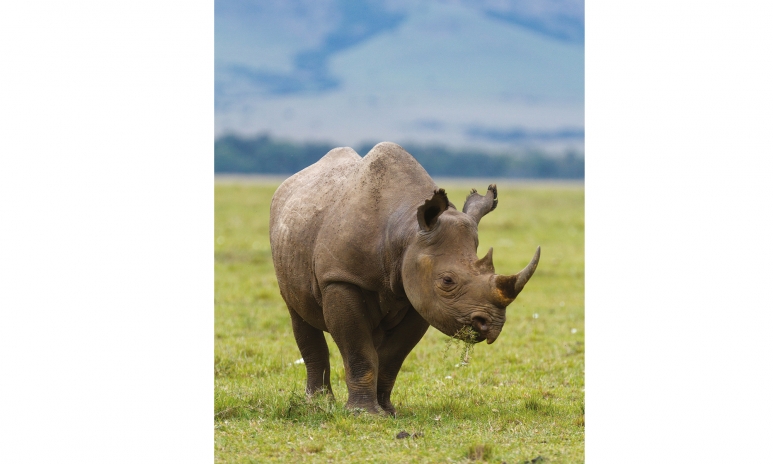
Rhino are being flown out of South Africa to Botswana where they have a greater chance of survival
Bergin believes a three-pronged approach is essential. “First, we need to stop poaching, with armed task forces and relocation projects,” he says. “Second, we need to stop the trafficking by stamping out corruption among customs, shipping and government officials, and by implementing much tighter security in African and Asian ports, including checks on all diplomatic luggage. Third, and probably most importantly, we need to stop the demand, which means a vast re-education programme across China and Vietnam.”
“We are racing against the clock and we don’t have the luxury of taking the long and winding conservation road. It’s a state of emergency”
It is widely agreed among conservationists that unless attitudes in Asia change, the crisis will end with the extinction of elephant and rhino. Unfortunately, re-education programmes are a lot less sexy than the “boots-and-bullets approach” of protecting animals on the ground, which means the media spotlight—and most of the money—is focused on Africa. “Attempting to curb the demand in Asia brings less immediate results because it requires a re-evaluation of belief systems, which can’t happen overnight,” says Bergin. “But Africa’s elephants and rhinos don’t have the luxury of time, so we must work with all our might. We have launched a ‘Say No’ public awareness campaign in China and Vietnam with clips and posters starring local celebrities, such as Yao Ming, Li Bingbing and Jackie Chan, and the tag line, ‘When the buying stops, the killing can too.’”
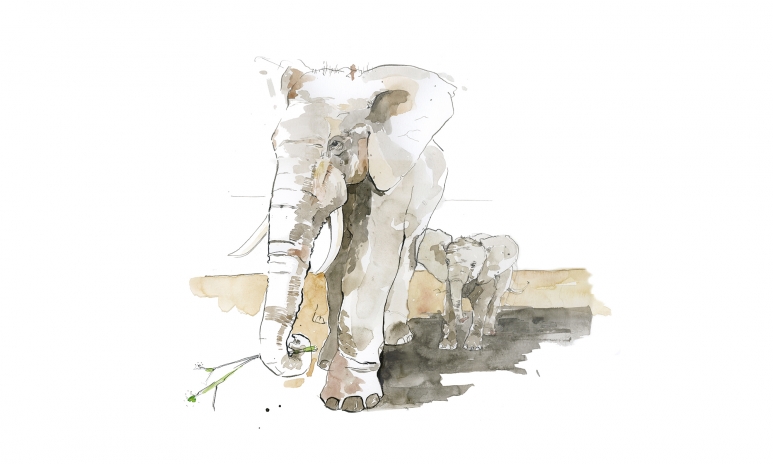
Illustrated by George Butler
Richard Leakey, the Kenyan conservationist who helped end the poaching crisis of the 1970s and ’80s, also believes in the power of mass entertainment. “You can’t underestimate the power of celebrity, my dear,” he tells me in Hong Kong, a place where traders still hold over 117 tonnes of legal ivory and through which a significant amount of the world’s illegal ivory is believed to pass. “This is why I have persuaded Brad Pitt to play me in a film about my life [Africa, to be directed by Angelina Jolie]. Through the ups and downs of my story, people will learn about the devastating nature of elephant poaching.”
The campaign in each country needs its own specific focus. The biggest issue in China is ivory, which is seen as a luxury product. Conservationists must upend this perception by showing there is nothing luxurious in the brutal slaying of the poached animal. In Vietnam, where the major issue is rhino horn, re-education campaigns need to convince consumers that despite deeply held traditional beliefs, rhino horn has no medicinal qualities.

Feeding an orphan at Borana, a rhino conservation farm in Kenya
From endemic corruption in Africa and Asia to the strength of international trafficking rings and entrenched belief systems, fighting the poaching crisis can seem like a Sisyphean challenge. However, on my final day in Tanzania, I watch a herd of elephant playing in a riverbed and I am struck once again by their gentleness, their guilelessness and their powerful family bonds. In many ways, they share the best of our human qualities and none of the worst, and somehow they put everything into much-needed perspective. As daunting as this fight is, we have no choice but to engage in it with all our might because the world needs elephant and the world needs rhino. And now the world needs to fight for their survival.
This article was originally published in the May 2015 issue of Hong Kong Tatler.
